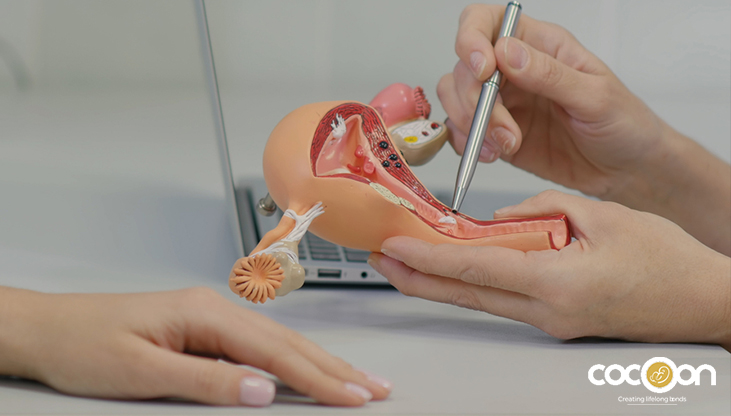Pregnancy is one of the most life-altering and happiest moments of a woman's life. While taking care of your baby's development, it's also crucial to look after your own health and wellness. Pregnancy exercise, when safe, is not only helpful but sometimes encouraged by doctors. It aids in weight management, increases energy levels, enhances sleep, alleviates pregnancy-related discomforts, and can also ease labor and delivery.
Let's go trimester by trimester through pregnancy-safe exercises, precautions to exercise, and easy routines that even a beginner can do.
Why Exercise Is Important During Pregnancy?
Pregnancy may be accompanied by physical discomfort like backache, swollen ankles, fatigue, and mood swing. Regular exercise makes the muscles more powerful, enhances blood flow, and also keeps the mind healthy. Exercise also helps lower the risk of gestational diabetes, preeclampsia, and excessive weight. Gentle exercise even for beginners like walking is helpful if done on a regular basis.
However, not all exercises are fine when pregnant. It's always important to be careful about low-impact, gentle movements that work in harmony with your body and not strain or risk your baby. Always consult your doctor's approval before starting a workout routine, particularly in high-risk pregnancy or existing health conditions.
General Pregnancy Exercise Precautions
Before jumping into trimester-based workout routines, let's learn about general rules:
- Listen to your body: Dizziness, lightheadedness, or pain when exercising mean you should stop right away.
- Stay well-hydrated: Drink lots of water before, during, and after exercise.
- Avoid overheating: Overheating is particularly risky during the first trimester. Avoid exercising in hot areas, and exercising outside in well-ventilated areas.
- Steer clear of high-risk activities: Steer clear of contact sports, heavy lifting, or exercises in which you lie on your back for extended periods of time after the first trimester.
- Wear supportive equipment: Dress in comfortable clothing, a quality sports bra, and support shoes.
First Trimester (Weeks 1–12)
Many women feel tired, nauseous, and moody during the first trimester. Exercise may be too much for others. However, gentle movement actually decreases some symptoms like morning sickness and mood swings.
First-trimester pregnancy exercises can include low-impact, light exercise. Walking is a good place to start as it brightens the mood, and no equipment is required. Prenatal stretching and yoga ease out flexibility and tension. Kegel exercises to build pelvic floor muscles can also be begun at this time.
Certain women can maintain pre-pregnancy habits if they want to, but they must not perform high-impact movements or exercise that strains the abdomen. Any other activity that warms the core too much should be avoided, including hot yoga.
Second Trimester (Weeks 13–27)
Since morning sickness has passed and energy tends to come back in the second trimester, this is an excellent time to develop strength and stamina. Your abdomen will begin to protrude, so balance exercises are now crucial. Your joints are more relaxed due to hormonal shiftsshift, so don't over-stretch.
Second trimester exercise routines can include prenatal yoga, moderate resistance training, brisk walks, swimming, and low-impact aerobics. Swimming itself is particularly encouraged—it reduces pressure on joints, supports your belly, and is a refreshing full-body workout.
Strengthen your back and core to ease back pain due to your expanding belly. Light dumbbells or resistance bands can be incorporated under proper supervision. Pelvic tilts, seated leg raises, and wall squats are also great.
Avoid exercises that involve lying down on your back for a long time at this point. Lying down on your back cuts off the flow of blood to your baby. Instead, use side-lying and the sitting and standing exercises.
Third Trimester (Weeks 28–40)
The third trimester is also filled with discomfort—shortness of breath, frequent urination, sore back, and poor sleep. Exercise at this point is more about moving around, maintaining flexibility, and getting the body ready for labor.
Third trimester safe stretches are cat-cow pose, butterfly stretch, pelvic rock, and hip-opening stretch. Prenatal yoga remains beneficial for relaxation, flexibility, and mood swings. Slow movement with deep breathing is a stress-relieving activity that can prepare the body for labor.
Walking is also among the best and safest exercises during this time. It maintains the blood flow and prevents swelling. In case balance is a problem, hold on to support or walk within the house.
Light squats with support can be performed to open up the pelvic area. Kegels and pelvic tilts are still necessary to perform in an effort to strengthen the pelvic floor and prevent delivery complications.
Avoid any exercises that put pressure on the abdomen or involve lying flat on the back. Always move slowly, breathe deeply, and avoid straining.
Best Pregnancy Workouts for Beginners
If you’re new to exercising or haven’t been active before pregnancy, start with small goals. The goal is not intensity but consistency and movement. Here are some beginner-friendly options across all trimesters:
- Walking: Safe and effective, this can be done daily.
- Yoga while pregnant: Excellent for stretching, breathing, and relaxation.
- Swimming: Relaxes the joints and maintains the abdominal support.
- Stationary bike: Safer than bicycle riding outdoors.
- Light weight training: With light weights or resistance bands with a doctor’s supervision.
Even a 15–30-minute exercise three to four times a week can make you feel better while pregnant.
When to Stop Exercising and See a Doctor?
Always pay attention to your body's cues. Immediately stop exercising and see your doctor if you experience:
- Bleeding or leakage from the vagina
- Dizziness or fainting
- Shortness of breath with effort
- Pain or rapid heart rate in the chest
- Weakness in the muscles
- Uterine contractions that are painful
Exercise should do your body good, not stress it out. If you ever have a doubt, speak with your healthcare provider.
How to Develop a Pregnancy-Safe Exercise Plan?
To develop a pregnancy-safe exercise plan, use these guidelines:
- Schedule a prenatal fitness consultation: Get most physiotherapists or certified prenatal trainers to create a program for your health, fitness, and trimester.
- Vary the activities: Include some cardio, strength, and stretching to make the routine more well-rounded.
- Rest days are a must: Make sure you leave space for rest for your body.
- Make it enjoyable: Choose activities that you enjoy doing so you'll continue with them.
Conclusion
Pregnancy is a lovely but challenging process. Careful and safe exercise can be your best friend in being able to cope with its physical and emotional fluctuations. No matter where you are in pregnancy, from your first trimester or your imminent delivery, there is a safe method to remain active and keep both yourself and your baby feeling healthy.
By knowing your body, being careful, and taking a routine trimester by trimester, you can benefit from the numerous positive aspects of exercise while pregnant. Always consult your gynaecologist before beginning or changing your routine.

















